Hugo Awards: The Short Stories (Volume 3) Read online
Page 22
This solipsistic periscope formed the basis of all that was to come.
A similarly rectangular arrangement of actuating rods allowed a displacement of action to accompany the displacement of vision afforded by the prisms. The bank of actuating rods was much larger than the periscope, but still relatively straightforward in design; by contrast, what was attached to the end of these respective mechanisms was far more intricate. To the periscope I added a binocular microscope mounted on an armature capable of swiveling side to side or up and down. To the actuating rods I added an array of precision manipulators, although that description hardly does justice to those pinnacles of the mechanician’s art. Combining the ingenuity of anatomists and the inspiration provided by the bodily structures they studied, the manipulators enabled their operator to accomplish any task he might normally perform with his own hands, but on a much smaller scale.
Assembling all of this equipment took months, but I could not afford to be anything less than meticulous. Once the preparations were complete, I was able to place each of my hands on a nest of knobs and levers and control a pair of manipulators situated behind my head, and use the periscope to see what they worked on. I would then be able to dissect my own brain.
The very idea must sound like pure madness, I know, and had I told any of my colleagues, they would surely have tried to stop me. But I could not ask anyone else to risk themselves for the sake of anatomical inquiry, and because I wished to conduct the dissection myself, I would not be satisfied by merely being the passive subject of such an operation. Auto-dissection was the only option.
I brought in a dozen full lungs and connected them with a manifold. I mounted this assembly beneath the worktable that I would sit at, and positioned a dispenser to connect directly to the bronchial inlets within my chest. This would supply me with six days’ worth of air. To provide for the possibility that I might not have completed my experiment within that period, I had scheduled a visit from a colleague at the end of that time. My presumption, however, was that the only way I would not have finished the operation in that period would be if I had caused my own death.
I began by removing the deeply curved plate that formed the back and top of my head; then the two, more shallowly curved plates that formed the sides. Only my faceplate remained, but it was locked into a restraining bracket, and I could not see its inner surface from the vantage point of my periscope; what I saw exposed was my own brain.
It consisted of a dozen or more subassemblies, whose exteriors were covered by intricately molded shells; by positioning the periscope near the fissures that separated them, I gained a tantalizing glimpse at the fabulous mechanisms within their interiors. Even with what little I could see, I could tell it was the most beautifully complex engine I had ever beheld, so far beyond any device man had constructed that it was incontrovertibly of divine origin. The sight was both exhilarating and dizzying, and I savored it on a strictly aesthetic basis for several minutes before proceeding with my explorations.
It was generally hypothesized that the brain was divided into an engine located in the center of the head which performed the actual cognition, surrounded by an array of components in which memories were stored. What I observed was consistent with this theory, since the peripheral subassemblies seemed to resemble one another, while the subassembly in the center appeared to be different, more heterogenous and with more moving parts. However the components were packed too closely for me to see much of their operation; if I intended to learn anything more, I would require a more intimate vantage point.
Each subassembly had a local reservoir of air, fed by a hose extending from the regulator at the base of my brain. I focused my periscope on the rearmost subassembly and, using the remote manipulators, I quickly disconnected the outlet hose and installed a longer one in its place. I had practiced this maneuver countless times so that I could perform it in a matter of moments; even so, I was not certain I could complete the connection before the subassembly had depleted its local reservoir. Only after I was satisfied that the component’s operation had not been interrupted did I continue; I rearranged the longer hose to gain a better view of what lay in the fissure behind it: other hoses that connected it to its neighboring components. Using the most slender pair of manipulators to reach into the narrow crevice, I replaced the hoses one by one with longer substitutes. Eventually, I had worked my way around the entire subassembly and replaced every connection it had to the rest of my brain. I was now able to unmount this subassembly from the frame that supported it, and pull the entire section outside of what was once the back of my head.
I knew it was possible I had impaired my capacity to think and was unable to recognize it, but performing some basic arithmetic tests suggested that I was uninjured. With one subassembly hanging from a scaffold above, I now had a better view of the cognition engine at the center of my brain, but there was not enough room to bring the microscope attachment itself in for a close inspection. In order for me to really examine the workings of my brain, I would have to displace at least half a dozen subassemblies.
Laboriously, painstakingly, I repeated the procedure of substituting hoses for other subassemblies, repositioning another one farther back, two more higher up, and two others out to the sides, suspending all six from the scaffold above my head. When I was done, my brain looked like an explosion frozen an infinitesimal fraction of a second after the detonation, and again I felt dizzy when I thought about it. But at last the cognition engine itself was exposed, supported on a pillar of hoses and actuating rods leading down into my torso. I now also had room to rotate my microscope around a full three hundred and sixty degrees, and pass my gaze across the inner faces of the subassemblies I had moved. What I saw was a microcosm of auric machinery, a landscape of tiny spinning rotors and miniature reciprocating cylinders.
As I contemplated this vista, I wondered, where was my body?
The conduits which displaced my vision and action around the room were in principle no different from those which connected my original eyes and hands to my brain. For the duration of this experiment, were these manipulators not essentially my hands? Were the magnifying lenses at the end of my periscope not essentially my eyes? I was an everted person, with my tiny, fragmented body situated at the center of my own distended brain. It was in this unlikely configuration that I began to explore myself.
I turned my microscope to one of the memory subassemblies, and began examining its design. I had no expectation that I would be able to decipher my memories, only that I might divine the means by which they were recorded. As I had predicted, there were no reams of foil pages visible, but to my surprise neither did I see banks of gearwheels or switches. Instead, the subassembly seemed to consist almost entirely of a bank of air tubules. Through the interstices between the tubules I was able to glimpse ripples passing through the bank’s interior.
With careful inspection and increasing magnification, I discerned that the tubules ramified into tiny air capillaries, which were interwoven with a dense latticework of wires on which gold leaves were hinged. Under the influence of air escaping from the capillaries, the leaves were held in a variety of positions. These were not switches in the conventional sense, for they did not retain their position without a current of air to support them, but I hypothesized that these were the switches I had sought, the medium in which my memories were recorded. The ripples I saw must have been acts of recall, as an arrangement of leaves was read and sent back to the cognition engine.
Armed with this new understanding, I then turned my microscope to the cognition engine. Here too I observed a latticework of wires, but they did not bear leaves suspended in position; instead the leaves flipped back and forth almost too rapidly to see. Indeed, almost the entire engine appeared to be in motion, consisting more of lattice than of air capillaries, and I wondered how air could reach all the gold leaves in a coherent manner. For many hours I scrutinized the leaves, until I realized that they themselves were playing the role of capi
llaries; the leaves formed temporary conduits and valves that existed just long enough to redirect air at other leaves in turn, and then disappeared as a result. This was an engine undergoing continuous transformation, indeed modifying itself as part of its operation. The lattice was not so much a machine as it was a page on which the machine was written, and on which the machine itself ceaselessly wrote.
My consciousness could be said to be encoded in the position of these tiny leaves, but it would be more accurate to say that it was encoded in the ever-shifting pattern of air driving these leaves.
Watching the oscillations of these flakes of gold, I saw that air does not, as we had always assumed, simply provide power to the engine that realizes our thoughts. Air is in fact the very medium of our thoughts.
All that we are is a pattern of air flow. My memories were inscribed, not as grooves on foil or even the position of switches, but as persistent currents of argon.
In the moments after I grasped the nature of this lattice mechanism, a cascade of insights penetrated my consciousness in rapid succession. The first and most trivial was understanding why gold, the most malleable and ductile of metals, was the only material out of which our brains could be made. Only the thinnest of foil leaves could move rapidly enough for such a mechanism, and only the most delicate of filaments could act as hinges for them. By comparison, the copper burr raised by my stylus as I engrave these words and brushed from the sheet when I finish each page is as coarse and heavy as scrap. This truly was a medium where erasing and recording could be performed rapidly, far more so than any arrangement of switches or gears.
What next became clear was why installing full lungs into a person who has died from lack of air does not bring him back to life.
These leaves within the lattice remain balanced between continuous cushions of air. This arrangement lets them flit back and forth swiftly, but it also means that if the flow of air ever ceases, everything is lost; the leaves all collapse into identical pendent states, erasing the patterns and the consciousness they represent.
Restoring the air supply cannot recreate what has evanesced. This was the price of speed; a more stable medium for storing patterns would mean that our consciousnesses would operate far more slowly.
It was then that I perceived the solution to the clock anomaly. I saw that the speed of these leaves’ movements depended on their being supported by air; with sufficient air flow, the leaves could move nearly frictionlessly. If they were moving more slowly, it was because they were being subjected to more friction, which could occur only if the cushions of air that supported them were thinner, and the air flowing through the lattice was moving with less force.
It is not that the turret clocks are running faster. What is happening is that our brains are running slower. The turret clocks are driven by pendulums, whose tempo never varies, or by the flow of mercury through a pipe, which does not change. But our brains rely on the passage of air, and when that air flows more slowly, our thoughts slow down, making the clocks seem to us to run faster.
I had feared that our brains might be growing slower, and it was this prospect that had spurred me to pursue my auto-dissection. But I had assumed that our cognition engines—while powered by air—were ultimately mechanical in nature, and some aspect of the mechanism was gradually becoming deformed through fatigue, and thus responsible for the slowing. That would have been dire, but there was at least the hope that we might be able to repair the mechanism, and restore our brains to their original speed of operation.
But if our thoughts were purely patterns of air rather than the movement of toothed gears, the problem was much more serious, for what could cause the air flowing through every person’s brain to move less rapidly? It could not be a decrease in the pressure from our filling stations’ dispensers; the air pressure in our lungs is so high that it must be stepped down by a series of regulators before reaching our brains. The diminution in force, I saw, must arise from the opposite direction: the pressure of our surrounding atmosphere was increasing.
How could this be? As soon as the question formed, the only possible answer became apparent: our sky must not be infinite in height. Somewhere above the limits of our vision, the chromium walls surrounding our world must curve inward to form a dome; our universe is a sealed chamber rather than an open well. And air is gradually accumulating within that chamber, until it equals the pressure in the reservoir below.
This is why, at the beginning of this engraving, I said that air is not the source of life. Air can neither be created nor destroyed; the total amount of air in the universe remains constant, and if air were all that we needed to live, we would never die. But in truth the source of life is a difference in air pressure, the flow of air from spaces where it is thick to those where it is thin. The activity of our brains, the motion of our bodies, the action of every machine we have ever built is driven by the movement of air, the force exerted as differing pressures seek to balance each other out. When the pressure everywhere in the universe is the same, all air will be motionless, and useless; one day we will be surrounded by motionless air and unable to derive any benefit from it.
We are not really consuming air at all. The amount of air that I draw from each day’s new pair of lungs is exactly as much as seeps out through the joints of my limbs and the seams of my casing, exactly as much as I am adding to the atmosphere around me; all I am doing is converting air at high pressure to air at low. With every movement of my body, I contribute to the equalization of pressure in our universe. With every thought that I have, I hasten the arrival of that fatal equilibrium.
Had I come to this realization under any other circumstance, I would have leapt up from my chair and ran into the streets, but in my current situation—body locked in a restraining bracket, brain suspended across my laboratory—doing so was impossible. I could see the leaves of my brain flitting faster from the tumult of my thoughts, which in turn increased my agitation at being so restrained and immobile. Panic at that moment might have led to my death, a nightmarish paroxysm of simultaneously being trapped and spiraling out of control, struggling against my restraints until my air ran out. It was by chance as much as by intention that my hands adjusted the controls to avert my periscopic gaze from the latticework, so all I could see was the plain surface of my worktable. Thus freed from having to see and magnify my own apprehensions, I was able to calm down. When I had regained sufficient composure, I began the lengthy process of reassembling myself. Eventually I restored my brain to its original compact configuration, reattached the plates of my head, and released myself from the restraining bracket.
At first the other anatomists did not believe me when I told them what I had discovered, but in the months that followed my initial auto-dissection, more and more of them became convinced. More examinations of people’s brains were performed, more measurements of atmospheric pressure were taken, and the results were all found to confirm my claims. The background air pressure of our universe was indeed increasing, and slowing our thoughts as a result.
There was widespread panic in the days after the truth first became widely know, as people contemplated for the first time the idea that death was inevitable. Many called for the strict curtailment of activities in order to minimize the thickening of our atmosphere; accusations of wasted air escalated into furious brawls and, in some districts, deaths. It was the shame of having caused these deaths, together with the reminder that it would be many centuries yet before our atmosphere’s pressure became equal to that of the reservoir underground, that caused the panic to subside. We are not sure precisely how many centuries it will take; additional measurements and calculations are being performed and debated. In the meantime, there is much discussion over how we should spend the time that remains to us.
One sect has dedicated itself to the goal of reversing the equalization of pressure, and found many adherents. The mechanicians among them constructed an engine that takes air from our atmosphere and forces it into a smaller volume, a p
rocess they called “compression.” Their engine restores air to the pressure it originally had in the reservoir, and these Reversalists excitedly announced that it would form the basis of a new kind of filling station, one that would—with each lung it refilled—revitalize not only individuals but the universe itself. Alas, closer examination of the engine revealed its fatal flaw.
The engine itself is powered by air from the reservoir, and for every lungful of air that it produces, the engine consumes not just a lungful, but slightly more. It does not reverse the process of equalization, but like everything else in the world, exacerbates it.
Although some of their adherents left in disillusionment after this setback, the Reversalists as a group were undeterred, and began drawing up alternate designs in which the compressor was powered instead by the uncoiling of springs or the descent of weights. These mechanisms fared no better. Every spring that is wound tight represents air released by the person who did the winding; every weight that rests higher than ground level represents air released by the person who did the lifting. There is no source of power in the universe that does not ultimately derive from a difference in air pressure, and there can be no engine whose operation will not, on balance, reduce that difference.
The Reversalists continue their labors, confident that they will one day construct an engine that generates more compression than it uses, a perpetual power source that will restore to the universe its lost vigor. I do not share their optimism; I believe that the process of equalization is inexorable. Eventually, all the air in our universe will be evenly distributed, no denser or more rarefied in one spot than in any other, unable to drive a piston, turn a rotor, or flip a leaf of gold foil. It will be the end of pressure, the end of motive power, the end of thought. The universe will have reached perfect equilibrium.

![[What Might Have Been 02] Alternate Heroes Read online](http://i1.bookreadfree.com/27/what_might_have_been_02_alternate_heroes_preview.jpg) [What Might Have Been 02] Alternate Heroes
[What Might Have Been 02] Alternate Heroes![[What Might Have Been 01] Alternate Empires Read online](http://i1.bookreadfree.com/01/what_might_have_been_01_alternate_empires_preview.jpg) [What Might Have Been 01] Alternate Empires
[What Might Have Been 01] Alternate Empires SEDUCTIVE: A Contemporary Romance Anthology
SEDUCTIVE: A Contemporary Romance Anthology A Year of Love
A Year of Love Super Daddies: A Naughty Nerdy Romantic Comedy Anthology
Super Daddies: A Naughty Nerdy Romantic Comedy Anthology Mystical Xmas: Paranormal Romance Anthology Box Set
Mystical Xmas: Paranormal Romance Anthology Box Set![[What Might Have Been 04] Alternate Americas Read online](http://i1.bookreadfree.com/06/what_might_have_been_04_alternate_americas_preview.jpg) [What Might Have Been 04] Alternate Americas
[What Might Have Been 04] Alternate Americas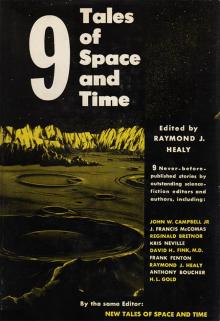 9 Tales of Space and Time
9 Tales of Space and Time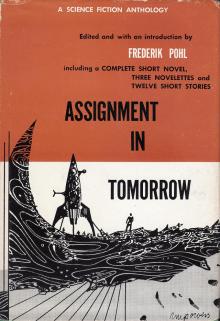 Assignment in Tomorrow
Assignment in Tomorrow![[What Might Have Been 03] Alternate Wars Read online](http://i1.bookreadfree.com/i/03/16/what_might_have_been_03_alternate_wars_preview.jpg) [What Might Have Been 03] Alternate Wars
[What Might Have Been 03] Alternate Wars The Complete Dangerous Visions
The Complete Dangerous Visions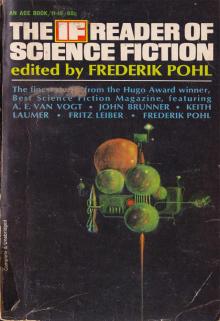 The IF Reader of Science Fiction
The IF Reader of Science Fiction Holiday in the Heart
Holiday in the Heart Torquere Press Sips and Shots
Torquere Press Sips and Shots Possess: An Alpha Anthology
Possess: An Alpha Anthology Beyond Control
Beyond Control Bad Boys Under the Mistletoe: A Begging for Bad Boys Collection
Bad Boys Under the Mistletoe: A Begging for Bad Boys Collection Hugo Awards: The Short Stories (Volume 3)
Hugo Awards: The Short Stories (Volume 3) The Second IF Reader of Science Fiction
The Second IF Reader of Science Fiction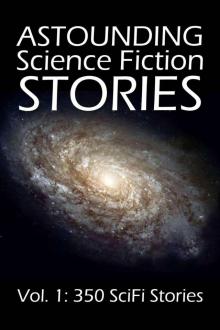 Astounding Science Fiction Stories Vol 1
Astounding Science Fiction Stories Vol 1 What Happens Over Spring Break: A Short Story Anthology
What Happens Over Spring Break: A Short Story Anthology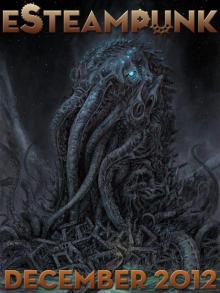 eSteampunk Vol. 01 No. 02
eSteampunk Vol. 01 No. 02 SHADOWRUN: Spells and Chrome (shadowrun)
SHADOWRUN: Spells and Chrome (shadowrun) Dark Tales
Dark Tales Getting Schooled (Craving #9)
Getting Schooled (Craving #9) The Hellfire Book of Beltane Volume One
The Hellfire Book of Beltane Volume One The Alpha's
The Alpha's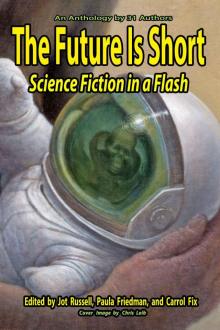 The Future Is Short
The Future Is Short From the Heart: A Valentine's Day Anthology
From the Heart: A Valentine's Day Anthology Reckless: A Bad Boyz Anthology
Reckless: A Bad Boyz Anthology LOL #3 Romantic Comedy Anthology
LOL #3 Romantic Comedy Anthology A Christmas Seduction: A Regency Anthology
A Christmas Seduction: A Regency Anthology All a Cowboy Wants for Christmas
All a Cowboy Wants for Christmas Hugo Awards: The Short Stories (Volume 2)
Hugo Awards: The Short Stories (Volume 2)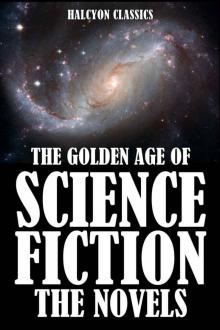 The Golden Age of Science Fiction Novels Vol 01
The Golden Age of Science Fiction Novels Vol 01 The Sirens of SaSS Anthology
The Sirens of SaSS Anthology Mistletoe & Kisses
Mistletoe & Kisses Explorers of Space
Explorers of Space Time Travel Omnibus Volume 2
Time Travel Omnibus Volume 2 Dead Science: A Zombie Anthology
Dead Science: A Zombie Anthology Beer Goggles Anthology
Beer Goggles Anthology Apexology: Horror
Apexology: Horror Heat Wave: A Summer Loving Anthology
Heat Wave: A Summer Loving Anthology Fall in Love
Fall in Love Love Under the Mistletoe
Love Under the Mistletoe Hook & Ladder 69: Eighteen Authors...One Sexy Firehouse.
Hook & Ladder 69: Eighteen Authors...One Sexy Firehouse. LOL #2 Romantic Comedy Anthology - Volume 2 - Even More All-New Romance Stories by Bestselling Authors (LOL Romantic Comedy Anthology #2)
LOL #2 Romantic Comedy Anthology - Volume 2 - Even More All-New Romance Stories by Bestselling Authors (LOL Romantic Comedy Anthology #2) Off the Beaten Path: Eight Tales of the Paranormal
Off the Beaten Path: Eight Tales of the Paranormal![Best New Zombie [3] - Best New Zombie Tales, Vol. 3 Read online](http://i1.bookreadfree.com/i/03/25/best_new_zombie_3_-_best_new_zombie_tales_vol_3_preview.jpg) Best New Zombie [3] - Best New Zombie Tales, Vol. 3
Best New Zombie [3] - Best New Zombie Tales, Vol. 3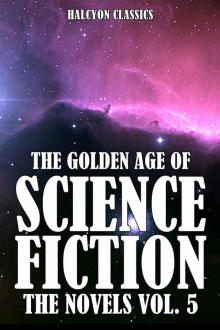 The Golden Age of Science Fiction Novels Vol 05
The Golden Age of Science Fiction Novels Vol 05 Alphas of Sin
Alphas of Sin Halloween Spirits: 11 Tales for the Darkest Night
Halloween Spirits: 11 Tales for the Darkest Night Night Shift 2
Night Shift 2 Ellora's Cavemen: Jewels of the Nile II
Ellora's Cavemen: Jewels of the Nile II Hot for the Holidays (21 Holiday Short Stories): A Collection of Naughty and Nice Holiday Romances
Hot for the Holidays (21 Holiday Short Stories): A Collection of Naughty and Nice Holiday Romances Of Heaven and Hell
Of Heaven and Hell 12 Christmas Romances To Melt Your Heart
12 Christmas Romances To Melt Your Heart '90s Playlist (Romance Rewind #1)
'90s Playlist (Romance Rewind #1) Bleed Blue 69: Twenty-Five Authors…One Sexy Police Station
Bleed Blue 69: Twenty-Five Authors…One Sexy Police Station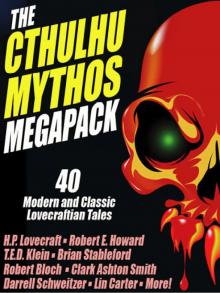 The Cthulhu Mythos Megapack (40 Modern and Classic Lovecraftian Tales)
The Cthulhu Mythos Megapack (40 Modern and Classic Lovecraftian Tales)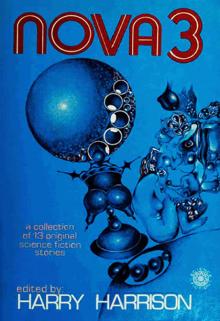 Nova 3
Nova 3 Unbroken: 13 Stories Starring Disabled Teens
Unbroken: 13 Stories Starring Disabled Teens Dead Men (and Women) Walking
Dead Men (and Women) Walking Sweet Seduction
Sweet Seduction Brothel: The Magnolia Diaries
Brothel: The Magnolia Diaries Rogues (A Boys Behaving Badly Anthology #1)
Rogues (A Boys Behaving Badly Anthology #1) Best New Zombie Tales, Vol. 3
Best New Zombie Tales, Vol. 3![The Hellfire Bo [1] - The Hellfire Book of Beltane Volume One Read online](http://i1.bookreadfree.com/i1/04/06/the_hellfire_bo_1_-_the_hellfire_book_of_beltane_volume_one_preview.jpg) The Hellfire Bo [1] - The Hellfire Book of Beltane Volume One
The Hellfire Bo [1] - The Hellfire Book of Beltane Volume One Horror in Paradise
Horror in Paradise Time Travel Omnibus Volume 1
Time Travel Omnibus Volume 1 More Than Words: Stories of Courage
More Than Words: Stories of Courage River Walk: Ten Kinky Collaborations
River Walk: Ten Kinky Collaborations F*cking Awkward
F*cking Awkward Hearts of England
Hearts of England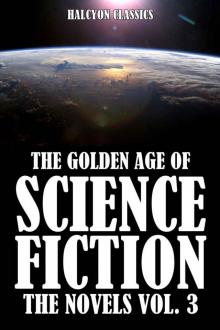 The Golden Age of Science Fiction Novels Vol 03
The Golden Age of Science Fiction Novels Vol 03 Drunk in Love
Drunk in Love Up and Coming: Stories by the 2016 Campbell-Eligible Authors
Up and Coming: Stories by the 2016 Campbell-Eligible Authors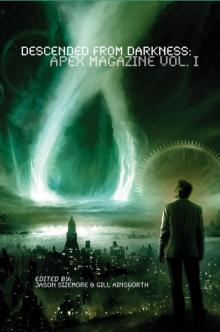 Descended from Darkness: Apex Magazine Vol I
Descended from Darkness: Apex Magazine Vol I Dominant Persuasions Anthology: 12 Tales of D/s, Where Mastery Meets Passion
Dominant Persuasions Anthology: 12 Tales of D/s, Where Mastery Meets Passion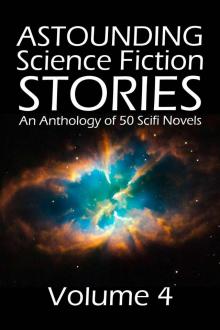 The Golden Age of Science Fiction Novels Vol 04
The Golden Age of Science Fiction Novels Vol 04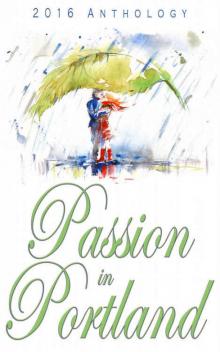 Passion in Portland 2016 Anthology
Passion in Portland 2016 Anthology Men of Mayhem
Men of Mayhem The Dirty Anthology
The Dirty Anthology Hot For Teacher
Hot For Teacher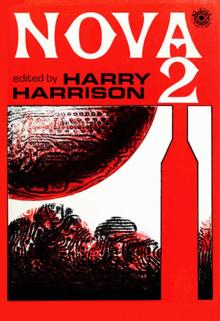 Nova 2
Nova 2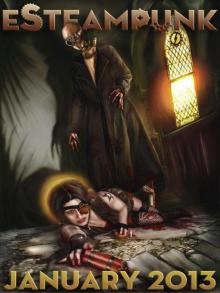 eSteampunk Vol. 01 No. 03
eSteampunk Vol. 01 No. 03 Afternoon Tea Mysteries Vol Three
Afternoon Tea Mysteries Vol Three Romance in the Rain
Romance in the Rain Tales From the Crossroad Volume 1
Tales From the Crossroad Volume 1 A Very Alpha Christmas
A Very Alpha Christmas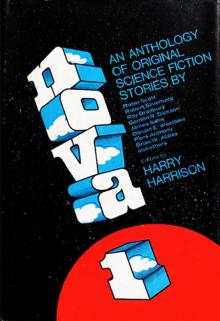 Nova 1
Nova 1 Once: A Collection of Sinfully Sexy and Twisted Tales
Once: A Collection of Sinfully Sexy and Twisted Tales Nuts About You: A Testicular Cancer Anthology
Nuts About You: A Testicular Cancer Anthology From the Street (shadowrun stories)
From the Street (shadowrun stories) Box of 1Night Stands: 21 Sizzling Nights
Box of 1Night Stands: 21 Sizzling Nights Descended from Darkness: Vol II
Descended from Darkness: Vol II Pink Shades of Words: Walk 2016
Pink Shades of Words: Walk 2016 The Art of Taking Chances
The Art of Taking Chances The Butterfly Box_A SASS Anthology
The Butterfly Box_A SASS Anthology Harlan County Horrors
Harlan County Horrors![Afternoon Tea Mysteries [Vol Three] Read online](http://i1.bookreadfree.com/i2/04/12/afternoon_tea_mysteries_vol_three_preview.jpg) Afternoon Tea Mysteries [Vol Three]
Afternoon Tea Mysteries [Vol Three]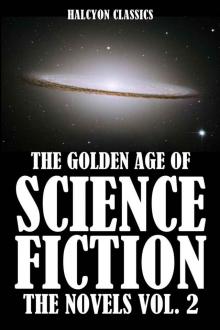 The Golden Age of Science Fiction Novels Vol 02
The Golden Age of Science Fiction Novels Vol 02 Ellora's Cavemen: Jewels of the Nile III
Ellora's Cavemen: Jewels of the Nile III